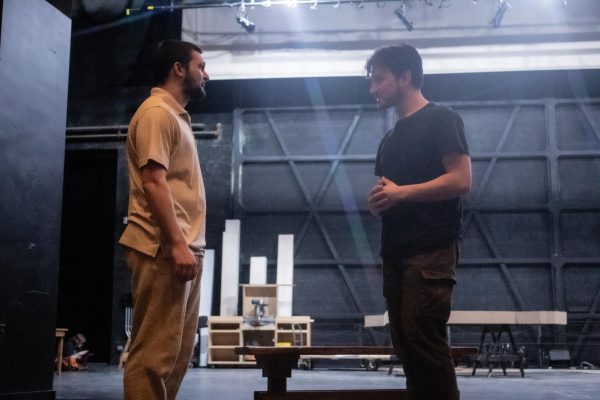Burrell Observatory lecture to explore future of space travel
While we may not have flying cars and robot butlers yet, space travel to other solar systems may be happening sooner rather than later.
Baldwin Wallace University’s Burrell Observatory will be hosting an open house program about the future of space travel. Jay Reynolds, an astronomy professor at Cleveland State University, will be the featured speaker at this event.
Gary Kader, astronomy professor at Baldwin Wallace University and the director of the Burrell Observatory, is the reason that Baldwin Wallace University originally connected with Reynolds. “Jay, like me, is an astronomy enthusiast. He teaches astronomy at Cleveland State and his official title is Research Astronomer. Also, for years he worked for the NASA Speakers Bureau. He’s very knowledgeable,” said Kader.
Reynolds’s lecture will be on the future possibilities of space travel. According to Kader, Reynolds will be discussing the possibility of being able to travel to the next solar system through sailing.
“Traveling around our solar system is not that difficult because it’s relatively small,” said Kader. “However, traveling outside of our solar system would take a lot more time because the distance between stars is massive.”
Kader said that NASA is working on utilizing solar wind, particles emitted from the sun, to sail to the solar system. With this new discovery, a space craft could reach the next solar system in about 50 years, said Kader.
NASA has become more interested in traveling outside of our solar system in recent years. Kader said that, prior to 1995, there was not knowledge about the existence of other solar systems. Now, however, Kader said that there are over 4,000 other known solar systems.
“There have been many exoplanets that have been discovered, and it’s pretty safe to say that every star has planets around it,” said Kader.
Kader said that he expects this lecture to be a well-attended lecture due to the topic of space travel.
“There is a broader interest in space travel rather than merely astronomy,” said Kader. “I mean, everyone likes Star Trek and Star Wars, and Jay Reynolds is a popular speaker.”
Reynolds is one of many speakers who have been featured at Burrell Observatory lectures. The Burrell Observatory lectures began ten years ago when Kader took over as the observatory director.
“I was asked to open the observatory to the public,” said Kader. “I decided to bring in speakers to attract more people to the observatory.”
Kader said that the first lecture he held ten years ago was attended by approximately 30 people, but now the lectures typically have about 300 attendees.
The lectures have become so popular that they have been moved to Kleist Center for Art and Drama in order to seat more people. In the past there have been three lectures each semester, but Kader said that, as of next semester, the system will be switching to two lectures each semester.
Not only are these lectures useful for educating the public and the Baldwin Wallace community, but these lectures help bring prospective students to campus, said Kader.
“I typically send out information about the lectures to local high school science teachers,” said Kader. “The last lecture was attended by about 17 high school students.”
Kader said the Burrell Observatory lectures have become one of the top outreach programs on campus.
While speakers are a main aspect of the lectures, the observatory is open to the public after the presentation. Kader said that, after the space travel lecture, if skies are clear, the public will be able to see a gas cloud called M42.
The space travel lecture will take place on February 22. The event is free and open to the public, but reserving a ticket is required.
The Exponent is looking for financial contributions to support our staff and our newsroom in producing high-quality, well-reported and accurate journalism. Thank you for taking the time to consider supporting our student journalists.












































